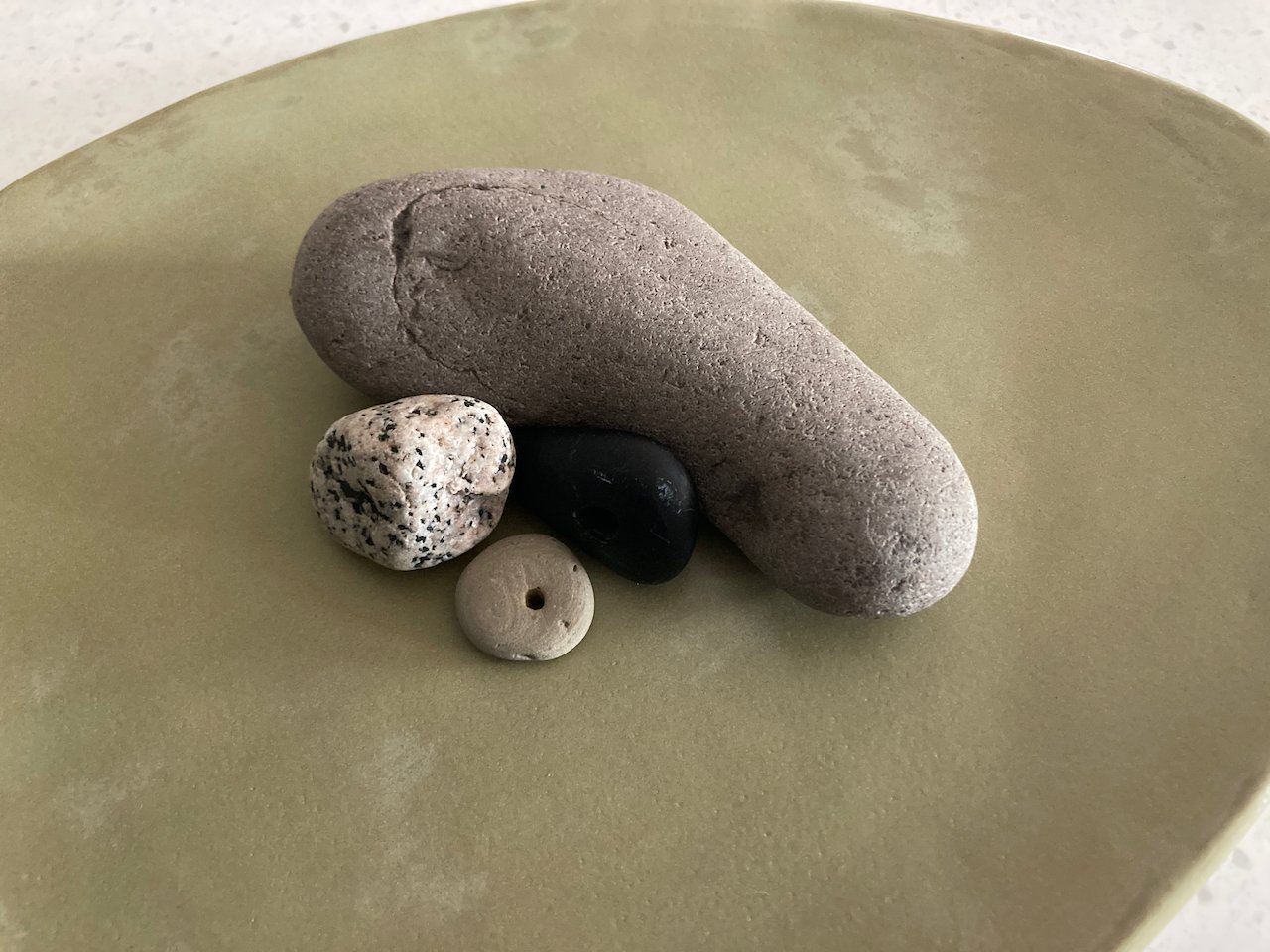Earlier this year, while at a highway gas station in New Mexico on a recent cross-country trip with my friend Tami Spry, she asked if we could pause a few minutes before getting back in the car.
She then strolled over to one of the large juniper bushes that border the highway and dot the surrounding high-desert mountains. She brought her face close to the plant and breathed in its woody fragrance. Then she broke off a small twig, murmured a “thank you” and returned to the car. “Okay,” she smiled, “Let’s go.”
Today, that juniper twig sits in Spry’s midwestern urban backyard, under the crabapple tree she and her husband Barry Scanlan planted last summer. “I feel like the twig speaks to the tree,” Spry says, “giving it strength and support to grow. I also like the idea of having something from the high desert in our lowly yard. Plus, whenever I look at the twig and tree I’m reminded of our cross-country trip.”
Whether on a New Mexico roadside or in her backyard garden, Spry values—and honors—the personal, physical and emotional relationship she has with the natural world. And she’s advocating for all of us to do so as well.
It’s in the doing
“I know it’s easy to dismiss any ‘commune-with-nature’ advice as hippy-dippy, tree-hugging,” says Spry. “But when you make it intentional and personal … it can be transformative.”
Spry—a scholar, performer, LPA-certified coach and recently retired professor of Communication and Performance Studies—is currently writing a book entitled Windowbox, Backyard, Woodlands: Our Everyday Relationship with Nature, which explores how we can all benefit by strengthening our personal connections to our natural surroundings.
“Of course, this isn’t new knowledge,” Spry is quick to point out. “Many cultures and indigenous peoples the world over honor, explore and celebrate a deep and ongoing kinship with the natural world. But this knowledge is by no means universal and, for many, it requires intention and practice to reclaim it.”
That intention and practice, for Spry, is what is important—the deliberate acts we can perform daily to examine the relationships between ourselves and the world around us. Spry calls it “being in constant conversation with the natural world.”
The key, Spry says, is that the conversation takes place among equals. Rather than assuming that we are merely the “protectors” or “caretakers” of nature, Spry urges us to think of the life of the natural world as valuable as our own. “Doing so, we move from patronizing stewardship of nature to being equal shareholders in this world,” Spry notes.
Spry recounts a story of visiting Minnesota’s North Shore and wading into Lake Superior. “Beyond the cold, bracing water on my feet, I ask: how is my body in conversation with this body of water? Well, my mother grew up on Lake Superior, on another shore, 300 miles east. Her body waded here as well. I consider the lake I am now standing in as important as me and my family.”
Good for you, good for us
Why take the time to reflect on these encounters with nature? The benefits are twofold, says Spry.
First, there are the personal benefits to mental and physical well-being. Studies show that time in nature can help lower blood pressure, heart rate and harmful hormones. In Japan, “forest bathing”—spending time in nature with all senses alert—is often a prescribed treatment for stress-related conditions and the practice is gaining currency in the west.[1]
Second, says Spry, “This practice has the potential to change our behaviors and beliefs regarding the natural world. When I consider my kinship with the waters of Lake Superior, that makes me intimately conscious of what goes into that lake and, by extension, our global waters.”
And you don’t need a forest or lake nearby to explore your relationship with the natural world; you don’t even need perfect weather. “Even if you live in Minnesota—as we do—where there are relatively few months when it’s comfortable to be outdoors, you can keep the conversation going,” says Spry. She and Scanlan recently offered tips for doing so for a piece in Retirement Wisdom.
“Deepened awareness of environmental issues is just one potential benefit of intentional daily practices,” says Spry. “Whatever your conversation looks like, or wherever it leads, is completely your own. It can be silly or sacred, simple or complex. If it leads you to environmental advocacy or in a spiritual direction, so be it. If it means adding another conch to your shell collection, great. The point is: do it. Let your feelings about being in nature move you into a conversation about why and how the natural world brings joy, comfort, beauty.”
Starting the conversation
So how to get started? Spry offers these three simple tips:
1. REFLECT
Observe the ways you already have a relationship with the natural world…or don’t. Do you regularly seek out joy in the natural world or your backyard or city park; or do you “save” your time with nature for when you go on vacation? “It’s easy to feel a connection,” says Spry, “when in the presence of grandeur—at the Grand Canyon or Niagara Falls. But what about the everyday? When we allow ourselves to explore nature’s presence more regularly—not just when we’re on vacation—it changes the way we relate to our lived environment.”
2. SELECT
“Next time you go for a walk—wherever—look down and if you see something you like, pick it up (if legal to do so!),” advises Spry. “When you return home, make a space for the object. Perhaps place it on a dish or cloth and set it on your desk or table. Pause and consider: Why did you pick it up? Did you like the color, shape, feel? Was it more about the place where it lay or the object itself? Think about it, write about it, talk about it, whatever. Do it again on your next walk, or simply step out into your backyard and really look at what is there on the ground, in a tree, or by your garage.”
3. CONNECT
Go to whatever outdoor space is closest to where you live: a front porch or yard if you have one, or a nearby common space or park. Find a spot you think is attractive. Don’t overthink it. Go to that spot and stand or sit there. Reflect on what you like about that spot. Perhaps find an object you collected on a walk and take it to this space.
The takeaway is the heart of Spry’s advocacy: spend more time outdoors and you’ll not only deepen your personal relationship with nature, you just may expand your health-giving connections with others.
1] https://www.cnn.com/2022/04/22/health/forest-bathing-wellness/index.html; https://thrive.kaiserpermanente.org/thrive-together/live-well/forest-bathing-try








